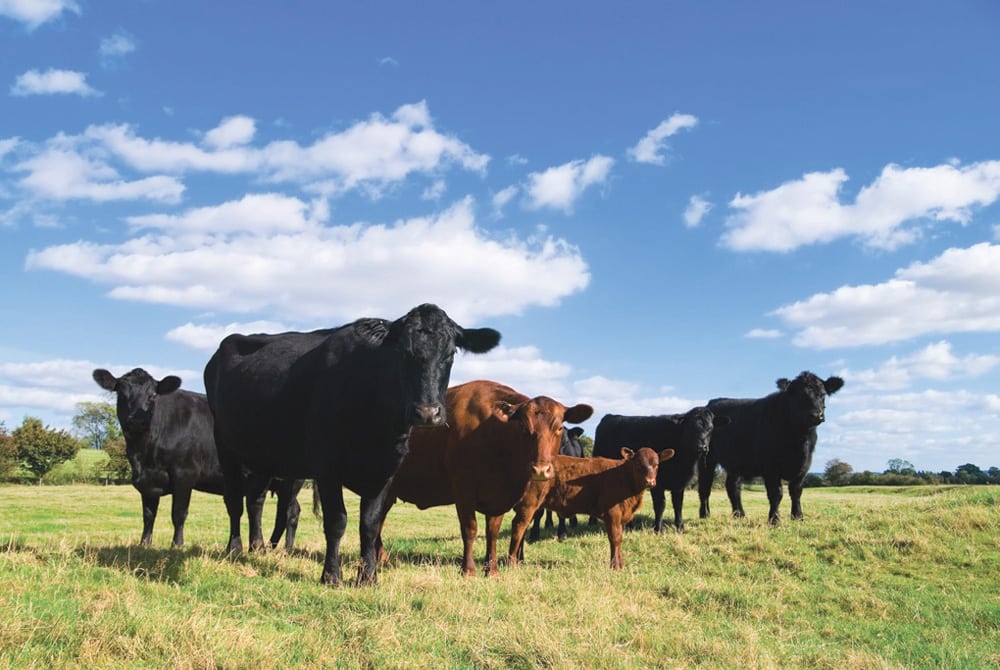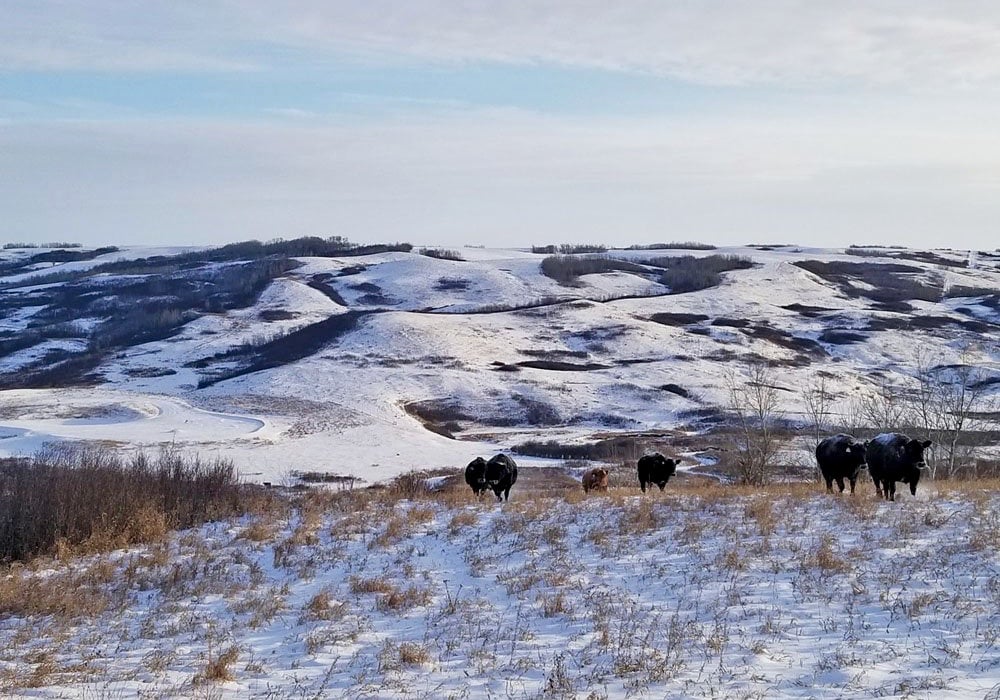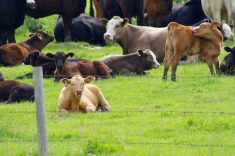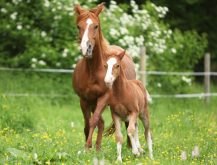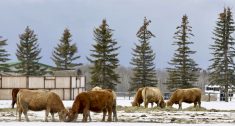With the shortage of feed across Western Canada, this may be a good year to downsize by extra culling.
The question of what the next wave of culls should be goes beyond reproduction — the fall is also an ideal time to consider culling problem cows. The yearly cost to maintain those cows is at least $350 each on the Prairies when hay prices are average. This year, it will be considerably higher than this.
Reproduction is the biggest loss to the cow-calf operator, so timely pregnancy diagnosis by your veterinarian will save considerable dollars in feed. Your profit is derived by pounds of beef sold, so open cows contribute nothing to that pool.
Read Also
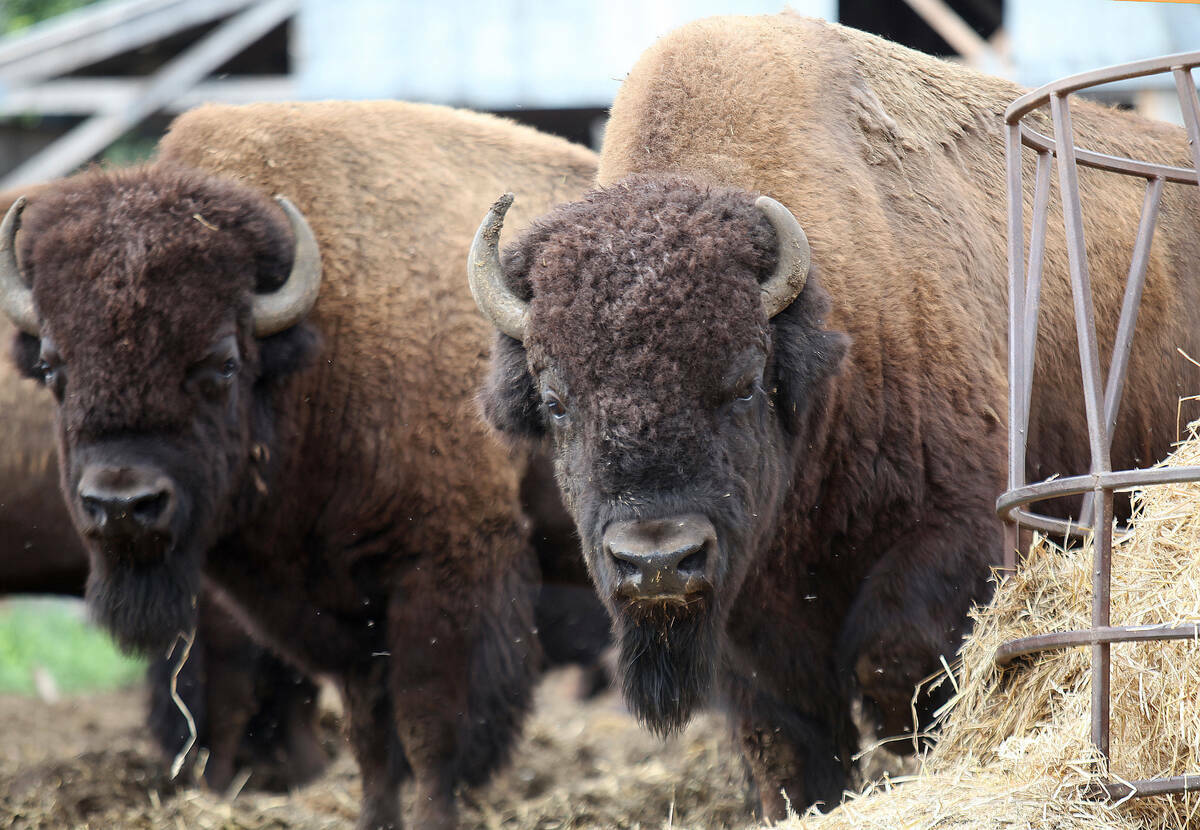
Bison prices remain high, but supply shrinks
Bison numbers are down amid increasing demand and record high market prices.
While palpating the cows, internal pelvic size can be assessed in heifers. Internal infection in abdomen (adhesions), tumours, as well as infected kidneys, can also be detected. In 95 per cent of cases, these cows will never breed.
Later-bred cows can also be detected and marked. If all calves are weaned together, these late-bred cows will wean smaller calves since the calves will be much younger. They may, however, fit well into another producer’s program and could be sold as bred cows. Since most herds average five to 10 per cent open or late cows, this procedure (pregnancy diagnosis) is an invaluable and necessary part of any beef operation.
Many other conditions can be eliminated at the pass through the chute, such as cows with vaginal prolapses, arthritis, bad feet, and poor udders (coke bottle teats or swing bags) should be marked out as well.
Remember that vaginal prolapses are generally hereditary, and it is wise to not keep any female offspring off that cow. Uterine prolapses, on the other hand, are not hereditary and this cow can be kept as long as she has rebred with the group. The likelihood of her re-prolapsing the next year is no more likely than any other cow.
Caesarean sections are an automatic cull the following year and many producers don’t even run them with a bull. Cracks, long toes, or other foot problems need either culling or attending to in order to enable them to be productive the following season. Again, some foot problems such as corkscrew claws and corns may be hereditary, so don’t retain their daughters in the herd.
Poor udders with large teats or broken-down suspensory should be closely scrutinized. Some of these develop over time in older cows. These cows are more prone to get mastitis, plus getting newborns to suckle on these large teats or low bags can be a formidable task in the spring (especially when producers’ time is at the premium).
Temperament is a definite consideration for culling.
My attitude is always, “There are too many quiet cows in the world to keep the wild, hard to handle, or fence crawlers.” Some cows, of course, are quite possessive right at calving but if they endanger workers, culling should be a consideration. The ladies on the farm usually have a temperament culling list and if they help at calving or do the calving, heed their suggestions and cull those cows.
A scale is a very valuable aid in selecting unproductive cows.
Remember the age-old rule of cows weaning at least half their body weight. Large cows need to wean larger calves in order to be profitable. Weighing calves at weaning and knowing the cow’s mature weight makes this decision very easy. Unproductive cows may be poor milkers or have some underlying disease resulting in unthrifty calves. A mature cow with chronic diarrhea, especially if losing weight, is a likely candidate for Johne’s disease and is best to ship for slaughter immediately after your veterinarian makes the diagnosis.
Older cows will start to lose teeth at about 10 years of age making it difficult to graze efficiently. Mouthing of some cows allows you to estimate age and cull while salvage is still an option. All cows should have all their eight front incisor teeth. If the neck is visible on the outside incisor, the cow is about nine years old. If you have birth dates, culling all older cows before a certain year of birth may be necessary. Usually their productivity will go down and odds of being open in subsequent years is higher. Cattle diseases (such as kidney disease, peritonitis from hardware) are more likely, so older cows are good candidates for culling.
Producers must record potential culls during the year as memories fade by fall. The cow that almost did your wife in at spring calving should not be forgotten about during fall culling. Producers may have questionable potential culls where the final decision is made at pregnancy checking time. If the open or late rate is lower than expected, this is an ideal time to cull for these borderline cases.
In a year like this one where feed may be short, extra culls should be thought of. It is far better to cull early and maintain good salvage value. By doing this, the younger, more productive cows are maintained in your herd.
You cannot make these decisions without clear records. For that, proper identification tags must be maintained in both cows and calves.
If you have access to a large herd liner, loads of cows may be able to be shipped directly to the plant. Inquire about this as transportation and other costs are saved.
Marketing ahead of time can have rewards. Remember to check to make sure all have RFID tags. If feeding cows for a short period, select appropriately based on body condition score, and discuss with your veterinarian any implanting, deworming, or external parasite recommendations to maximize growth.
Cows that have nice red leaner meat are very desirable for the ground beef market so let’s not forget that.
Again, years of feed shortage may be ones to tighten up culling of any older bulls or ones with issues. Ones with borderline semen tests, temperament, and a myriad of other reasons are grounds for culling bulls. The feed saved can go towards the purchase of a younger, potentially better herd sire next year.
Maximize your culls — bulls, cows, and heifers — when feed is in short supply by making well-thought-out decisions.


